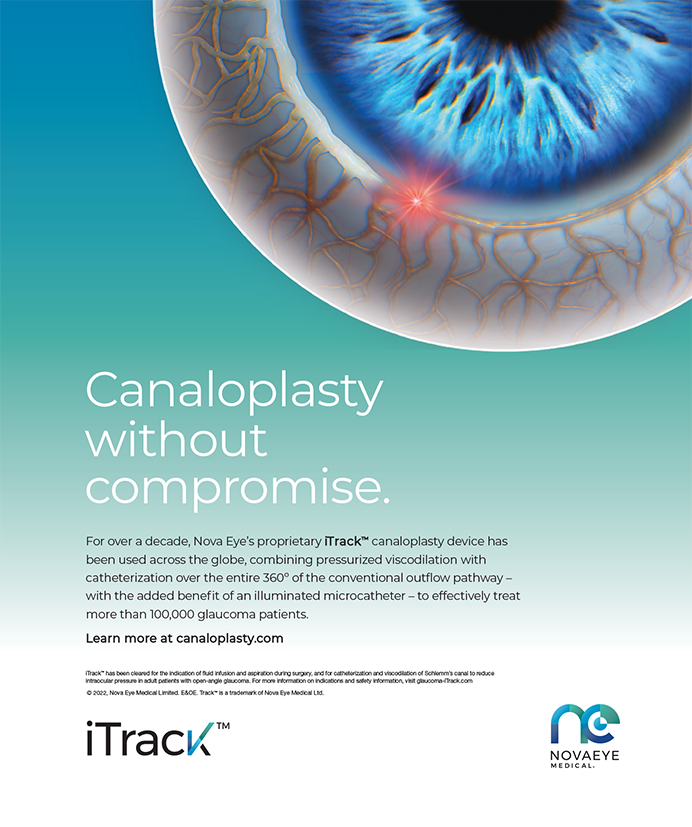Patients with various tear and ocular surface disorders present with a similar spectrum of eye irritation symptoms that do not differentiate between common etiologies, including aqueous tear deficiency (ATD), meibomian gland disease (MGD) with increased tear evaporation, and conjunctivochalasis. During the past decade, a major focus at the Ocular Surface Center at Baylor College of Medicine has been to identify methods by which to differentiate between aqueous-deficient and aqueous-sufficient tear dysfunction. Our research has found that the direct measurement of tear meniscus dimensions with anterior segment optical coherence tomography (AS-OCT) helps to distinguish between these subsets of patients.
THE ROLE OF AS-OCT
The noninvasive, direct, high-resolution measurement of tear meniscus dimensions by OCT appears to be a major advance in ophthalmologists’ ability to gauge tear volume in unstimulated basal conditions. Studies suggest that OCT has the potential to subclassify tear dysfunction.1 When measured with AS-OCT, inferior tear meniscus height was a surrogate for tear volume. This parameter was lower in patients with ATD and correlated with clinical parameters, including noninvasive tear breakup time and severity of corneal fluorescein staining. Based on the Japanese Dry Eye criteria, an inferior tear meniscus height of less than 0.3 mm had a sensitivity of 67% and a specificity of 81% for dry eye.2
CLINICAL EXPERIENCE
My colleagues and I compared tear meniscus height and area measured by OCT in a variety of tear dysfunction conditions.3 Our study included 128 eyes of 64 patients with MGD, ATD, Sjögren syndrome, non- Sjögren syndrome ATD, and healthy control subjects. We used the RTVue (Optovue) to measure lower tear meniscus height and cross-sectional tear meniscus area, and we assessed conventional tear parameters, including tear breakup time, corneal fluorescein staining, conjunctival lissamine green staining, and an irritation symptom questionnaire (Ocular Surface Disease Index). We compared and correlated the results with the OCT findings.
Compared with mean tear meniscus height in the control group (345 μm), this parameter was lower for all tear dysfunction groups (234 μm, P = .0057), ATD (210 μm, P = .0016), and Sjögren syndrome (171 μm, P = .0054). For tear meniscus height (≤ 210 μm), the relative risk ratio for developing severe corneal staining was 4.65. Tear meniscus height correlated with the severity of corneal fluorescein staining for all subjects (R = -0.32, P = .0008). Most interestingly, we discovered an inverse correlation between tear meniscus height and the degree of corneal fluorescein staining in the ATD group (R = -0.36, P = .04) and a direct correlation between fluorescein staining and tear meniscus height in the MGD group (R = +0.40, P = .059). A low tear volume correlated with worse corneal epithelial disease in aqueous-deficient conditions with lacrimal gland secretory dysfunction, and a high tear volume was associated with corneal epithelial disease in patients with MGD.
In another study, we found a moderate, statistically significant inverse correlation between tear meniscus height measured with OCT and the severity of corneal fluorescein staining in response to 90-minute exposure to a low-humidity environment in a goggles system.4
We also reported that OCT can measure the area of conjunctivochalasis and that the prevalence of this condition increases with age.5
CONCLUSION
The findings of these studies indicate that OCT is a rapid, noninvasive method to subclassify patients based on their tear meniscus height and the presence of conjunctivochalasis. As a noncontact device that does not induce reflex tearing, OCT offers significant advantages over the traditional Schirmer test.
Stephen C. Pflugfelder, MD, is a professor and director of the Ocular Surface Center, Department of Ophthalmology, Baylor College of Medicine in Houston. He acknowledged no financial interest in the products or companies mentioned herein. Dr. Pflugfelder may be reached at stevenp@bcm.edu.
- Wang J, Palakuru JR, Aquavella JV. Correlations among upper and lower tear menisci, nonivasive tear break-up time, and the Schirmer test. Am J Ophthalmol. 2008;145:795-800.
- Ibrahim OM, Dogru M, Takano Y, et al. Application of Visante optical coherence tomography tear meniscus height measurement in the diagnosis of dry eye disease. Ophthalmology. 2010;117:1923-1929.
- Tung CI, Perin AF, Gumus K, Pflugfelder SC. Tear meniscus dimensions in tear dysfunction and their correlation with clinical parameters. Am J Ophthalmol. 2014;157(2):301-310.
- Alex A, Edwards A, Hays JD, et al. Factors predicting the ocular surface response to desiccating environmental stress. Invest Ophthalmol Vis Sci. 2013;54(5):3325-3332.
- Gumus K, Pflugfelder SC. Increasing prevalence and severity of conjunctivochalasis with aging detected by anterior segment optical coherence tomography. Am J Ophthalmol. 2013;155(2):238-242.


